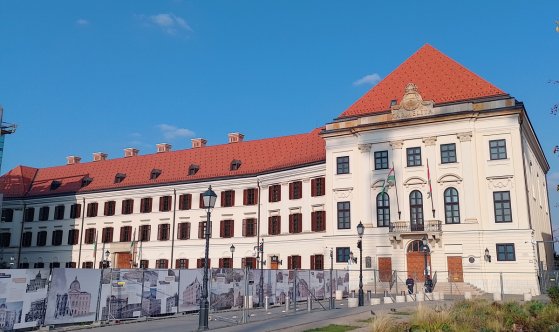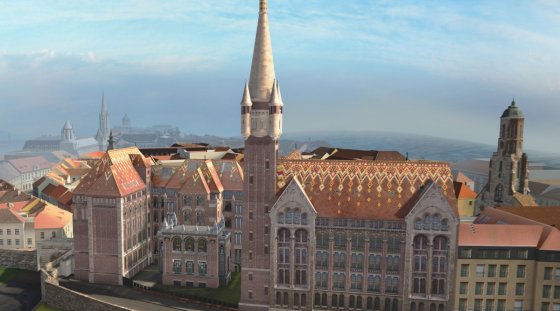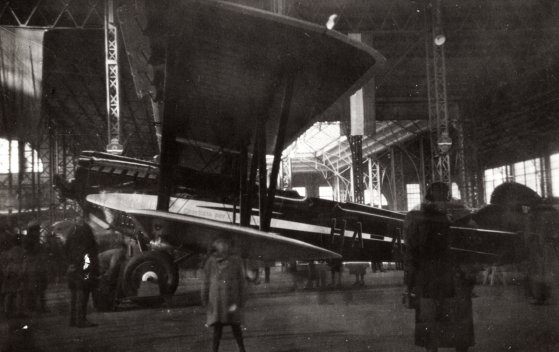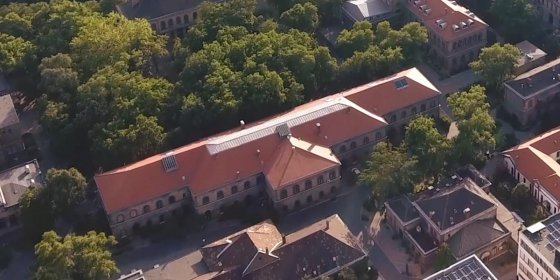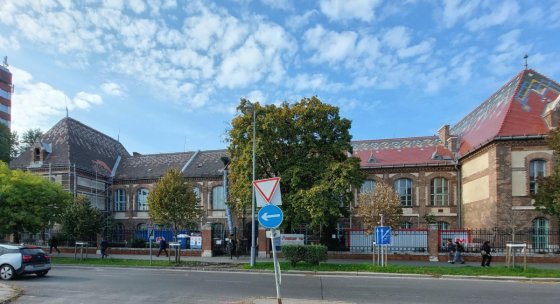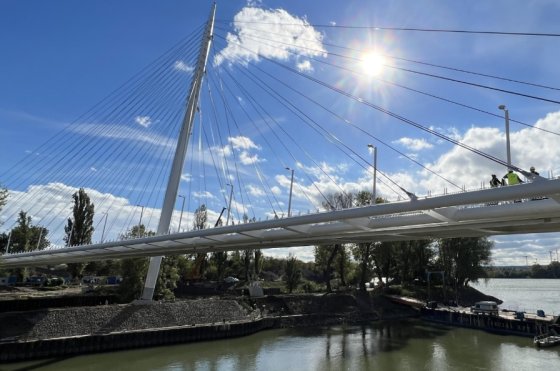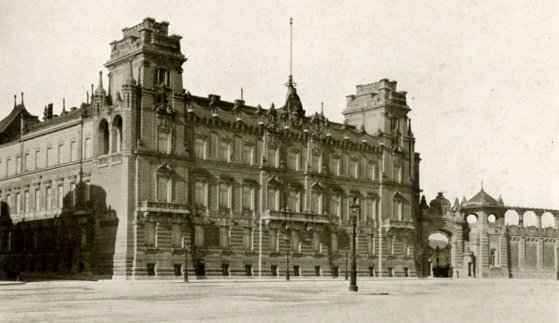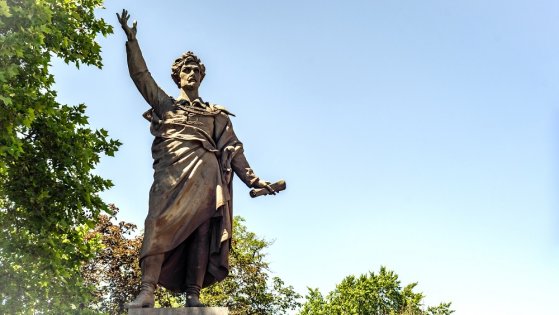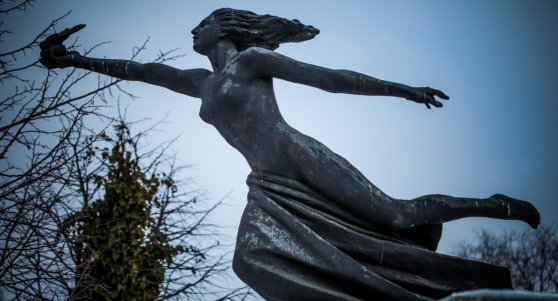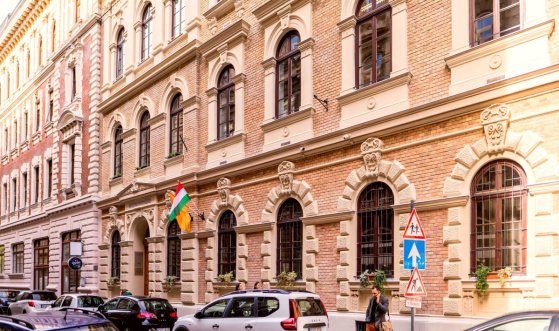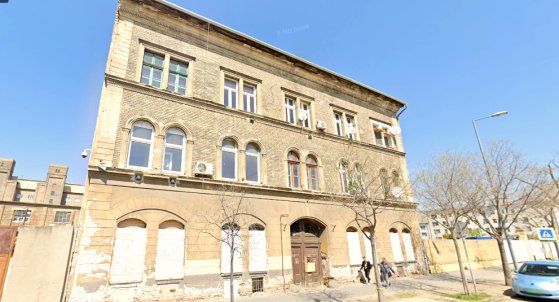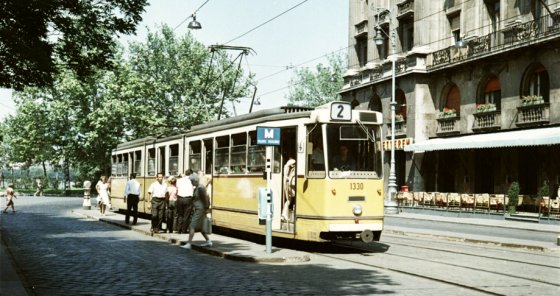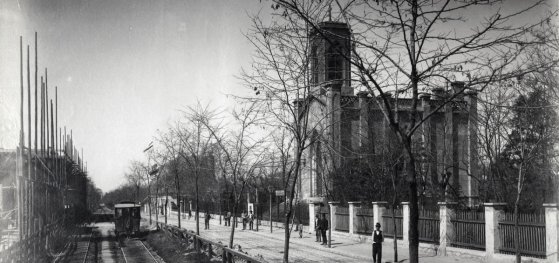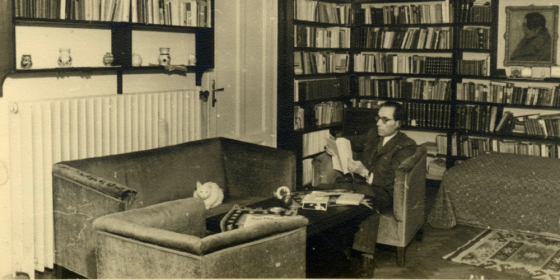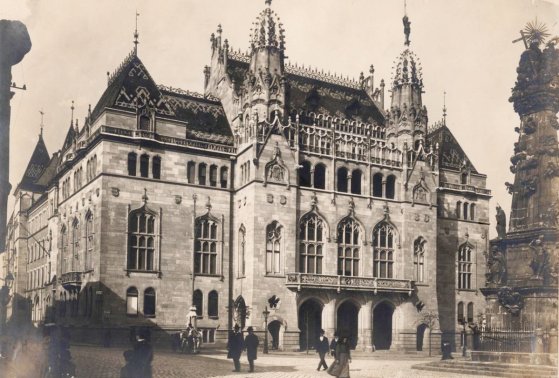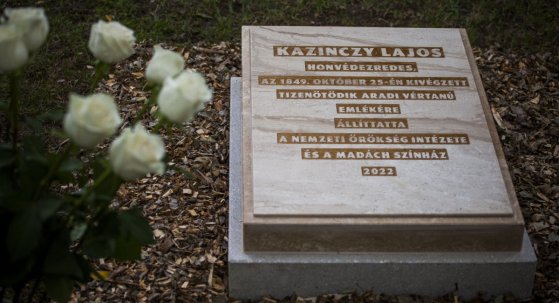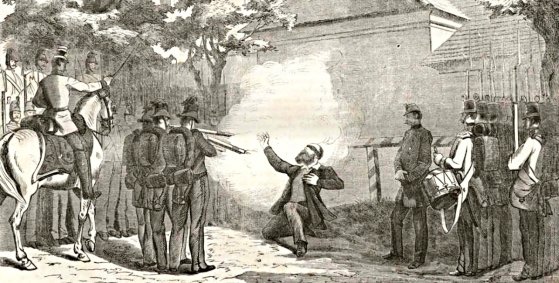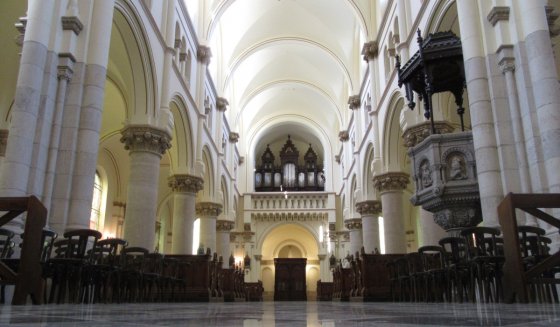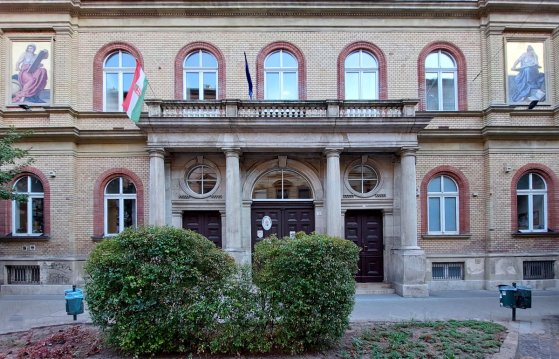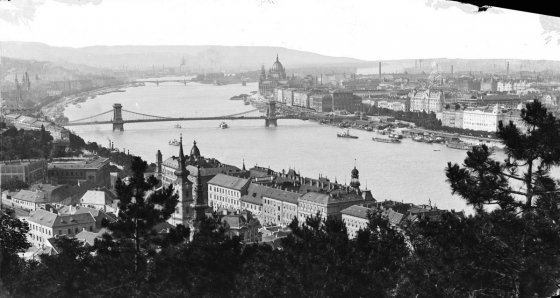 The „intertwined history” of the bridges and the city of Budapest
Which ideas and events have shaped the fate of bridges of Budapest and the cityscape? Alongside many other interesting facts, this question is also answered this newly published book by the Budapest City Archives, which introduces the history of bridges in Budapest.
The „intertwined history” of the bridges and the city of Budapest
Which ideas and events have shaped the fate of bridges of Budapest and the cityscape? Alongside many other interesting facts, this question is also answered this newly published book by the Budapest City Archives, which introduces the history of bridges in Budapest.
PestBuda
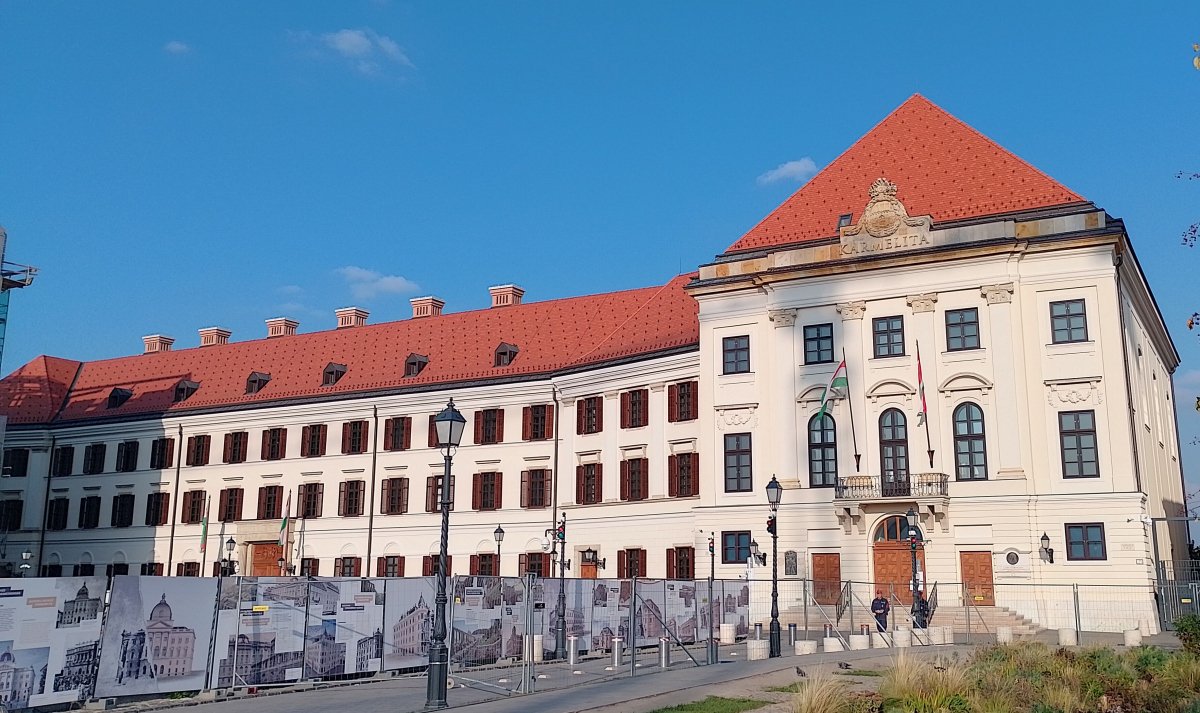 Szórakozóhellyé alakították a templomot és a kolostort – 235 éve nyílt meg a Várszínház
Szórakozóhellyé alakították a templomot és a kolostort – 235 éve nyílt meg a Várszínház
October 16, 2022 at 9:00 AM
A Budai Vár egyik jellegzetes épülete a Karmelita kolostor, melyet közel négy éve a Miniszterelnökség használ. A névadó szerzetesrend valójában már nagyon régen kivonulni kényszerült a falak közül, egészen pontosan 235 évvel ezelőtt alakították Várszínházzá templomukat. A kíméletlen beavatkozás magát az épületet is nagyban érintette, de javarészt ekkor alakult ki az a képe, amelyet ma is ismerünk.
The church and monastery were turned into a place of entertainment - the Castle Theatre opened 235 years ago
October 16, 2022 at 9:00 AM
One of the characteristic buildings of the Buda Castle is the Carmelite monastery, which has been used by the Prime Minister's Office for almost four years. The eponymous order of monks was actually forced to withdraw from the walls a long time ago, precisely 235 years ago, their church was turned into Castle Theatre. The ruthless intervention also greatly affected the building itself, but it was mostly then that the image that is known today was formed.
Csúszik a Magyar Nemzeti Levéltár felújítása és bővítése
October 15, 2022 at 5:00 PM
Visszavonták a Magyar Nemzeti Levéltár székházának építési munkálataira kiírt közbeszerzési felhívást, így egyelőre nem lehet tudni, mikor kezdődhet meg a Bécsi kapu téri épület felújítása, Pecz Samu eredeti terveinek megfelelő bővítése és a háború után elbontott ikonikus tornyának visszaépítése.
The renovation and expansion of the Hungarian National Archives are delayed
October 15, 2022 at 5:00 PM
The public procurement call for the construction of the headquarters of the Hungarian National Archives has been withdrawn, so it is not yet known when the renovation of the Bécsi Kapu Square building, the appropriate expansion of Samu Pecz's original plans and the rebuilding of its iconic tower, which was demolished after the war, can begin.
Repülőgépcsodák az Iparcsarnokban – Az óceánt átszelte, de Rómában lezuhant a Justice for Hungary gép pilótája
October 15, 2022 at 11:00 AM
A repülés valódi világába kaphattak betekintést azok, akik jegyet váltottak 90 éve az Endresz György Aviatikai Kiállításra, mert nemcsak a földön láthatták a repülőgépeket, de a szerencsések repülőutakat is nyerhettek. Az 1932. október 15-én megnyílt kiállítás egyben a szerencsétlen sorsú magyar óceánrepülőre, Endresz Györgyre emlékezett.
Miracle aeroplanes in the Industrial Hall - The pilot of the Justice for Hungary plane crossed the ocean but crashed in Rome
October 15, 2022 at 11:00 AM
Those who bought tickets to the György Endresz Aviation Exhibition 90 years ago were able to get an insight into the real world of aviation, because not only could they see the planes on the ground, but the lucky ones could also win flights. The exhibition, which opened on 15 October 1932, also commemorated the unfortunate Hungarian transatlantic pilot, György Endresz.
Kezdődik az Állatorvosi Egyetem neoreneszánsz épületegyüttesének felújítása
October 14, 2022 at 7:00 PM
Hamarosan megkezdődik az Állatorvostudományi Egyetem István utcai kampuszának fejlesztése. A kampusz Steindl Imre által tervezett épületei közül több is megújul. A patinás épületeket korszerűsítik, ezeknél a belső tereket és a homlokzatokat a műemléki értékek megóvásával újítják fel.
The renovation of the Neo-Renaissance building complex of the University of Veterinary Medicine begins
October 14, 2022 at 7:00 PM
The development of the István Street campus of the University of Veterinary Medicine will begin soon. Several of the buildings on the campus, designed by Imre Steindl, will be renovated. Buildings with a patina are modernised, and their interiors and facades are renovated while preserving historic values.
Felújítják a Műegyetem műemlék épületének tetőszerkezetét
October 14, 2022 at 1:00 PM
Már felállványozták a Műegyetem Gépészmérnöki Karának Duna-parti műemlék épületét, a felújítás elkezdődött. A Pecz Samu által tervezett kétszintes épület az egyetem központi székházától délre fekszik. A tető rekonstrukciója az épület északi felén már korábban elkészült, most a másik oldalon is megkezdődtek a helyreállítási munkák.
The roof structure of the University of Technology monument building is being renovated
October 14, 2022 at 1:00 PM
Scaffolding has already been erected for the Danube-bank monument building of the Faculty of Mechanical Engineering of the University of Technology, and the renovation has begun. The two-story building designed by Samu Pecz is located south of the central headquarters of the university. The reconstruction of the roof on the northern side of the building was already completed, and now the restoration work has started on the other side as well.
Szerkezetkész a Csepelt Pesttel összekötő gyalogoshíd
October 13, 2022 at 5:30 PM
Már szerkezetkész állapotban van a Robinson híd, amely a ferencvárosi atlétikai stadion mellől indulva összeköti Csepelt a pesti oldallal.
The footbridge connecting Csepel to Pest is structurally ready
October 13, 2022 at 5:30 PM
The Robinson Bridge, which connects Csepel with the Pest side, starting from the Ferencváros athletics stadium, is already structure-ready.
Mátyás király ezüstdénárját is megtalálták a régészek a József főhercegi palota újjáépítése során
October 13, 2022 at 2:00 PM
A budavári Szent György téren újjászülető József főhercegi palota építésekor a régészeti feltárás több különlegességet hozott felszínre: egy majdnem egészben megmaradt török kori rézkancsót, Mátyás király ezüstdénárját, értékes kerámia- és üveganyagokat találtak a szakemberek. Fellelték azt a lejárót is, amely egy természetes sziklabarlangból kialakított pincébe vezetett. A helyiséget feltehetően a középkorban használták.
Archaeologists also found a silver denarius of King Matthias during the reconstruction of Archduke Joseph's palace
October 13, 2022 at 2:00 PM
During the construction of the reborn Archduke Joseph's palace on Buda Castle's Szent György Square, the archaeological excavation brought several special features to the surface: the specialists found an almost intact copper jug from the Turkish era, a silver denarius of King Matthias, and valuable ceramic and glass materials. They also found the passage that led to a cellar created from a natural rock cave. The room was probably used in the Middle Ages.
Száznegyven éve leplezték le Petőfi Sándor szobrát Budapesten
October 13, 2022 at 9:00 AM
Több mint két évtizedre visszanyúló előzmények után, 1882. október 15-én leplezték le Petőfi Sándor híres budapesti szobrát, ahol később annyi politikai megmozdulást, ünnepi beszédet tartottak a szabadság eszméjének jegyében, hogy napjainkra ikonikussá vált az emlékmű. Hosszúra nyúlt viták, elapadó adománygyűjtés, az alkotás elkészítésére felkért szobrász halála nehezítette azt az utat, amelyet be kellett járni az ötlet felszínre bukkanásától a szobor felállításáig. Ezt a történetet járjuk körül írásunkkal.
Újabb műalkotásokat lehet megismerni a Fiumei úti sírkertben
October 12, 2022 at 3:30 PM
A Fiumei Úti Nemzeti Sírkertben újabb jelentős művészeti értéket képviselő síremlékekről és alkotójukról olvashatunk ismertetést QR-kód segítségével. Az intézmény Szoborpark programjába most bekerült húsz műemlékleírás között szerepel Miklós Andor mauzóleumának szobra, valamint Pállik Béla síremléke.
More works of art can be seen in the Fiumei Road Cemetery
October 12, 2022 at 3:30 PM
In the Fiumei Road Cemetery, a description of new tombstones of significant artistic value and their creator can be read with the help of a QR code. The statue of Andor Miklós' mausoleum and the tomb of Béla Pállik are among the twenty monument descriptions that have just been included in the institution's Sculpture Park program.
Átépítik a Duna-parti szállodát, amely az egykori Lloyd-palota helyén áll
October 12, 2022 at 9:00 AM
A pesti Duna-korzó a második világháború pusztításai miatt veszítette el korábbi egyedülálló hangulatát. A régi palotasor helyére modern szállodák épültek, az elpusztult Lloyd-palota telkén pedig 1982 óta az Atrium Hyatt áll, amely ma a Sofitel nevet viseli. A szálloda hamarosan új homlokzatot kap, az építési engedély október elején vált véglegessé. Ebben azt olvashatjuk, hogy az épület egy szinttel magasabb lesz. A látványterveket még nem tették közzé.
The hotel on the site of the former Lloyd Palace is being rebuilt
October 12, 2022 at 9:00 AM
Due to the ravages of World War II, Pest's Danube Promenade lost its former unique atmosphere. Modern hotels have been built in place of the old row of palaces, and the Atrium Hyatt has stood on the site of the destroyed Lloyd Palace since 1982, which today bears the name Sofitel. The hotel will soon receive a new facade, the building permit became final at the beginning of October. It can be read in the permit that the building will get a new level. Design renders have not yet been released.
Megszépült a terézvárosi zeneiskola homlokzata
October 11, 2022 at 7:00 PM
Felújították a műemléki környezetben található Tóth Aladár Zeneiskola homlokzatát a VI. kerületi Szív utca 19–21. szám alatt. A patinás épület Feszl Frigyes tervei alapján épült 1874-ben. Az Erkel-iskolával közös udvart is átalakítják.
The facade of the music school in Terezváros has been beautified
October 11, 2022 at 7:00 PM
The facade of the Aladár Tóth Music School, located in the historic environment at 19-21 Szív Street in the 6th District, has been renovated. The prestigious building was built in 1874 based on the designs of Frigyes Feszl. The courtyard shared with the Erkel school is also being transformed.
Házbontások a fővárosban
October 11, 2022 at 5:30 PM
Több olyan bontási engedélyezés iránti eljárás indult az elmúlt hónapokban Budapesten, amelyek a történelmi városrészt vagy városképi szempontból fontos, más belterületeket érintik. Ezekből válogattunk.
House demolitions in the capital
October 11, 2022 at 5:30 PM
Several demolition permit procedures have been initiated in Budapest in recent months, which affect the historic part of the city or other interior areas important from a cityscape point of view. Pestbuda has selected from these.
Ipari csuklósok a fővárosban: Velük fejeződött be a magyar villamosgyártás
October 11, 2022 at 11:00 AM
Budapest a villamosok városa. Elképzelhetetlen lenne a főváros a hosszú sárga járművek nélkül. Az elmúlt 140 évben hihetetlenül sok típus koptatta a síneket, de kevés olyan meghatározó jármű volt közöttük, mint az ipari csuklós.
Industrial articulated trams in the capital: Hungarian tram production ended with them
October 11, 2022 at 11:00 AM
Budapest is the city of trams. The capital would be unimaginable without the long yellow vehicles. An incredible number of types have worn the rails over the past 140 years, but few vehicles have been as defining as the industrial articulated tram.
Romantikus ékszerdoboz Zuglóban – 180 éve kezdték építeni a Hermina-kápolnát
October 10, 2022 at 5:00 PM
A Városliget keleti határát jelentő Hermina út egyik jellegzetes épülete a pici Hermina-kápolna. Mérete ellenére nagyon is meghatározó szerepe van, hiszen nemcsak az utat nevezték el róla, de a városrészt is, ahol áll: Herminamező. Stílusához illően története is romantikus, szépséget és tragédiákat egyaránt tartalmaz. A kis kápolna alapkövét éppen száznyolcvan évvel ezelőtt tették le.
A romantic jewellery box in Zugló - The construction of the Hermine Chapel began 180 years ago
October 10, 2022 at 5:00 PM
One of the typical buildings on Hermina Road, which marks the eastern border of City Park, is the small Hermina Chapel. Despite its size, it has a very decisive role, as not only the road was named after it, but also the district where it stands: Herminamező. In keeping with its style, its story is also romantic, containing both beauty and tragedy. The foundation stone of the small chapel was laid just one hundred and eighty years ago.
Elárverezték a Vérhalom téri állami tulajdonú villát, amelyben Göncz Árpád lakott
October 10, 2022 at 2:00 PM
A II. kerületi, Vérhalom tér 7/b szám alatti kétszintes villát, amelyben az egykori köztársasági elnök, Göncz Árpád és felesége lakott, 833 millió forintért adták el. A Magyar Nemzeti Vagyonkezelő Zrt. online árverésén a licit szombaton késő este zárult, a nyertes több száz millió forinttal ajánlott többet a kikiáltási árnál.
The state-owned villa in Vérhalom Square, where Árpád Göncz lived, was auctioned
October 10, 2022 at 2:00 PM
The two-story villa at 7B Vérhalom Square in the 2nd District, where the former President of the Republic, Árpád Göncz and his wife lived, was sold for 833 million HUF. Bidding at the online auction of Hungarian National Asset Management Inc. ended late on Saturday, and the winner offered several hundred million forints more than the asking price.
Egy urbánus költő, aki rajongott a hegyvidékért – 65 éve hunyt el Szabó Lőrinc
October 8, 2022 at 3:00 PM
Szabó Lőrinc költő, író, műfordító Miskolcról érkezett Budapestre az 1910-es évek végén. A fővárosban akkor már pezsgett az irodalmi és a kulturális élet, melynek ő is rövid idő alatt a részévé vált. Kávéházakba, irodalmi szalonokba járt, gyakran megfordult a Babits és a Hatvany Lajos körül kialakult alkotói közegben. Lakott a nyüzsgő Pesten, majd évtizedeken át a csendesebb Budán. Akárcsak a pesti élet, a budai környezet és életforma is megjelent műveiben. A Nyugat második nemzedékéhez tartozó Kossuth-díjas költő 65 éve hunyt el.
115 évvel ezelőtt lett kész teljesen a Pénzügyminisztérium palotája
October 7, 2022 at 9:00 AM
Kevésbé ismert, hogy 1907. október 7-én fejeződtek be teljesen a Pénzügyminisztérium Szentháromság téri palotájának építési munkálatai. Az építkezés érdemi munkáira 1901 októbere és 1904 decembere között került sor, ám az utómunkálatok azonban 1907 októberéig folytatódtak. S több sarkalatos dátum is kapcsolódik magához az építkezéshez.
The Palace of the Ministry of Finance was completed 115 years ago
October 7, 2022 at 9:00 AM
It is lesser known that on 7 October 1907, the construction works of the Ministry of Finance's Szentháromság Square palace were completed. The significant construction work took place between October 1901 and December 1904, but the post-construction work continued until October 1907. And several pivotal dates are connected to the construction itself.
Felavatták a tizenötödik aradi vértanú, Kazinczy Lajos emlékhelyét a Fiumei úti sírkertben
October 6, 2022 at 2:00 PM
A tizenötödik aradi vértanú, Kazinczy Lajos tiszteletére állított emlékhelyet a Fiumei úti sírkertben a Nemzeti Örökség Intézete és a Madách Színház. A nyelvújító Kazinczy Ferenc fiát 1849. október 25-én végezték ki Aradon. A Fiume úti temetőben megtalálhatjuk az 1848-49-es szabadságharcban elesett honvédek parcelláját is, valamint három aradi özvegy síremlékét.
The memorial site of the 15th martyr of Arad, Lajos Kazinczy, was inaugurated in the Fiumei Road Cemetery
October 6, 2022 at 2:00 PM
The National Heritage Institute and the Madách Theatre set up a memorial in honour of the fifteenth Arad martyr, Lajos Kazinczy, in the Fiumei Road Cemetery. The son of the language reformer Ferenc Kazinczy was executed on 25 October 1849 in Arad. The parcel of the soldiers who died in the 1848-49 War of Independence can be found in the Fiumei Road Cemetery, as well as the tombstones of three Arad widows.
Egy életút pesti állomásai: tragikus sors jutott Batthyány Lajosnak
October 6, 2022 at 10:00 AM
Október 6-án nemcsak az Aradon kivégzett 13 honvéd főtisztre emlékezünk, hanem a Pesten, az Újépület (Neugebäude) udvarán kivégzett gróf Batthyány Lajosra, Magyarország első felelős kormányának mártírhalált halt miniszterelnökére is. A kivégzés helyén 1926 óta örökmécses áll, méltó emléket állítva a grófnak, aki életét adta a magyar szabadságért. A reformkori ellenzék vezérévé vált Batthyány 1841-ben költözött Pestre, a főváros számos nevezetes helyszínén megfordult, ezeket gyűjtöttük össze a tragikus évfordulón.
The Pest stations of a life: A tragic fate that befell Lajos Batthyány
October 6, 2022 at 10:00 AM
On 6 October, Hungarians remember not only the 13 generals of the army executed in Arad, but also Count Lajos Batthyány, the martyred Prime Minister of Hungary's first responsible government, who was executed in Pest, in the courtyard of the New Building. An eternal flame has stood at the place of the execution since 1926, a worthy memorial to the count, who gave his life for Hungarian freedom. Batthyány, who became the leader of the opposition during the reform era, moved to Pest in 1841, visited many notable places in the capital, and Pestbuda now collected these on the tragic anniversary.
Teljesen elkészült az Ybl Miklós tervezte Bakáts téri templom
October 5, 2022 at 6:30 PM
Befejeződött a ferencvárosi Bakáts téri templom felújítása. Az altemplom bővítésével egy új urnatemetői részt is kialakítottak, új padlóburkolatot kapott a templom, helyreállították a vakolatot, és restaurátori munkákat is végeztek, hétvégén pedig az új oltárt is felszentelték.
The Bakáts Square Church designed by Miklós Ybl has been completed
October 5, 2022 at 6:30 PM
The renovation of the Bakáts Square Church in Ferencváros has been completed. With the expansion of the crypt, a new urn burial section was created, the church received a new floor covering, the plaster was restored and restoration work was carried out. The new altar was also consecrated at the weekend.
130 éve költözött be mai otthonába a Madách Imre Gimnázium
October 5, 2022 at 11:00 AM
A VII. kerületi Állami Gymnasium, vagyis a mai Madách Imre Gimnázium 1892 szeptemberében nemcsak az új tanévet, hanem új otthonát is köszönthette. Az 1881-ben alapított intézménynek több mint 10 éven át nem volt önálló épülete, bérelt helyiségekben folyt a tanítás. Az oktatási ügyeket irányító vallás- és közoktatási miniszter, Trefort Ágoston idősebb Bobula János építészt bízta meg a gimnázium terveinek elkészítésével. Ám Trefort időközben elhunyt, és az új miniszternek más elképzelései voltak a gimnázium épületéről.
Imre Madách Secondary School moved into its current home 130 years ago
October 5, 2022 at 11:00 AM
In September 1892, the 7th District State Secondary School, i.e., today's Imre Madách Secondary School, welcomed not only the new academic year but also its new home. The institution, founded in 1881, did not have its own building for more than 10 years, teaching took place on rented premises. The Minister of Religion and Public Education in charge of educational affairs, Ágoston Trefort, commissioned the architect János Bobula Sr. to prepare the plans for the secondary school. But Trefort passed away in the meantime, and the new minister had other ideas about the school building.
More articles
 The „intertwined history” of the bridges and the city of Budapest
Which ideas and events have shaped the fate of bridges of Budapest and the cityscape? Alongside many other interesting facts, this question is also answered this newly published book by the Budapest City Archives, which introduces the history of bridges in Budapest.
The „intertwined history” of the bridges and the city of Budapest
Which ideas and events have shaped the fate of bridges of Budapest and the cityscape? Alongside many other interesting facts, this question is also answered this newly published book by the Budapest City Archives, which introduces the history of bridges in Budapest.
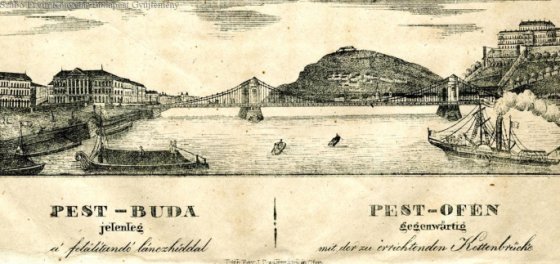 The Bridge Report, which brought a turning point in the history of Budapest
A travel report that changed the history of Pest and Buda, as well as Hungary. The little book contributed to the change of half a thousand years of legal customs and the implementation of an investment of unprecedented size and technical quality. This book was The Bridge Report [Hídjelentés in Hungarian].
The Bridge Report, which brought a turning point in the history of Budapest
A travel report that changed the history of Pest and Buda, as well as Hungary. The little book contributed to the change of half a thousand years of legal customs and the implementation of an investment of unprecedented size and technical quality. This book was The Bridge Report [Hídjelentés in Hungarian].
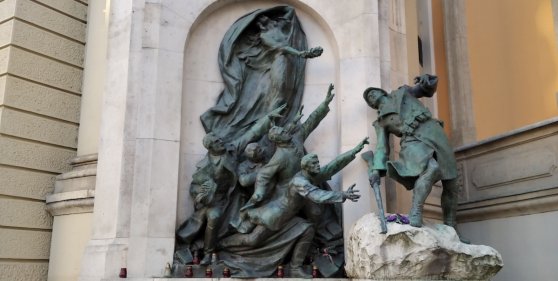 Drama on the university wall - The heroic monument was planned 95 years ago
In the constant hustle and bustle of the Egyetem Square in Pest, the students may not even notice the monument that decorates the short section of wall between the church and the central building of ELTE. However, it commemorates their predecessors, the heroes who fought for their country in World War I, and those who heroically helped them. The first design of the dramatically collapsing soldier was born in 1928, ninety-five years ago.
Drama on the university wall - The heroic monument was planned 95 years ago
In the constant hustle and bustle of the Egyetem Square in Pest, the students may not even notice the monument that decorates the short section of wall between the church and the central building of ELTE. However, it commemorates their predecessors, the heroes who fought for their country in World War I, and those who heroically helped them. The first design of the dramatically collapsing soldier was born in 1928, ninety-five years ago.

